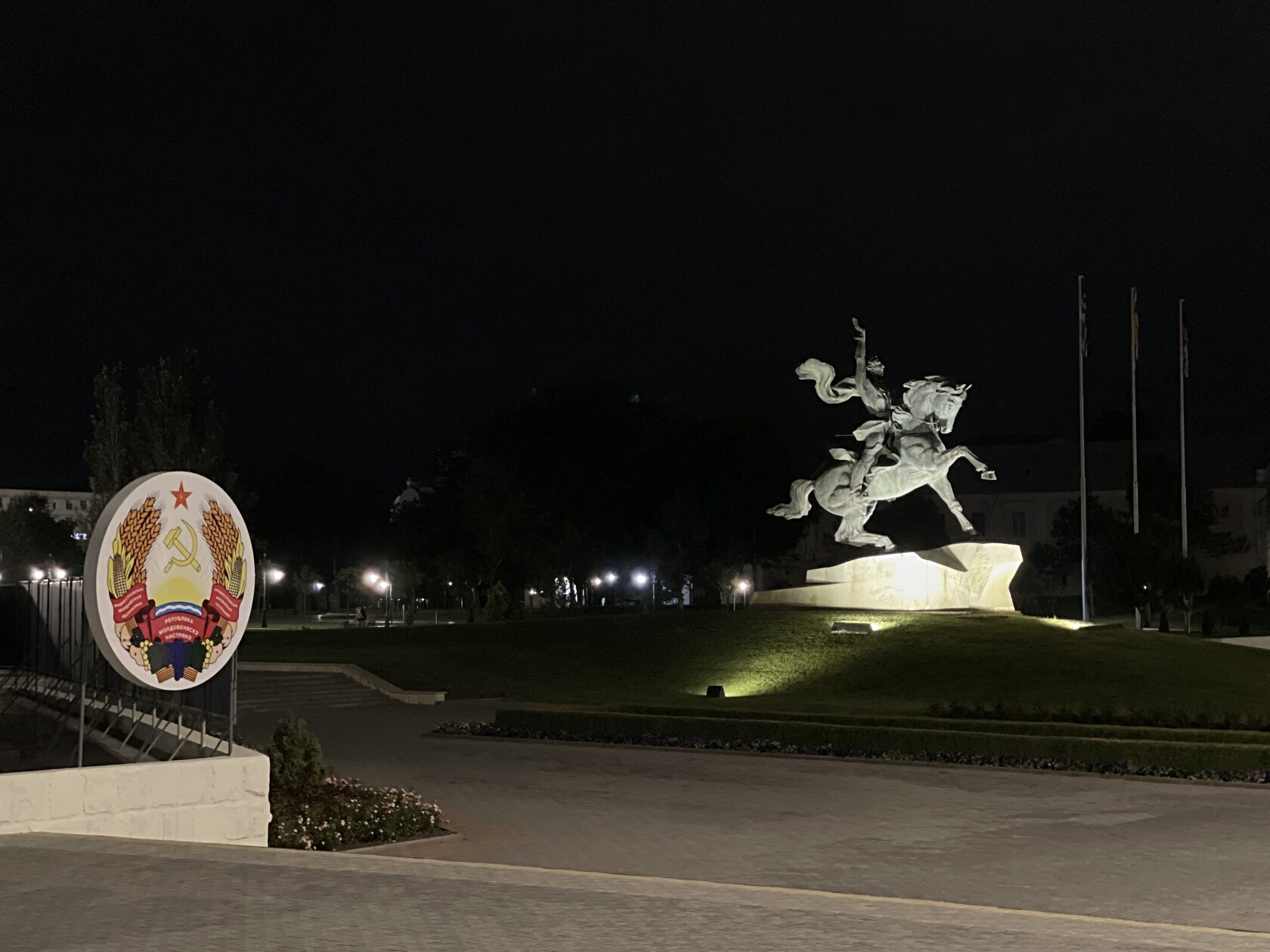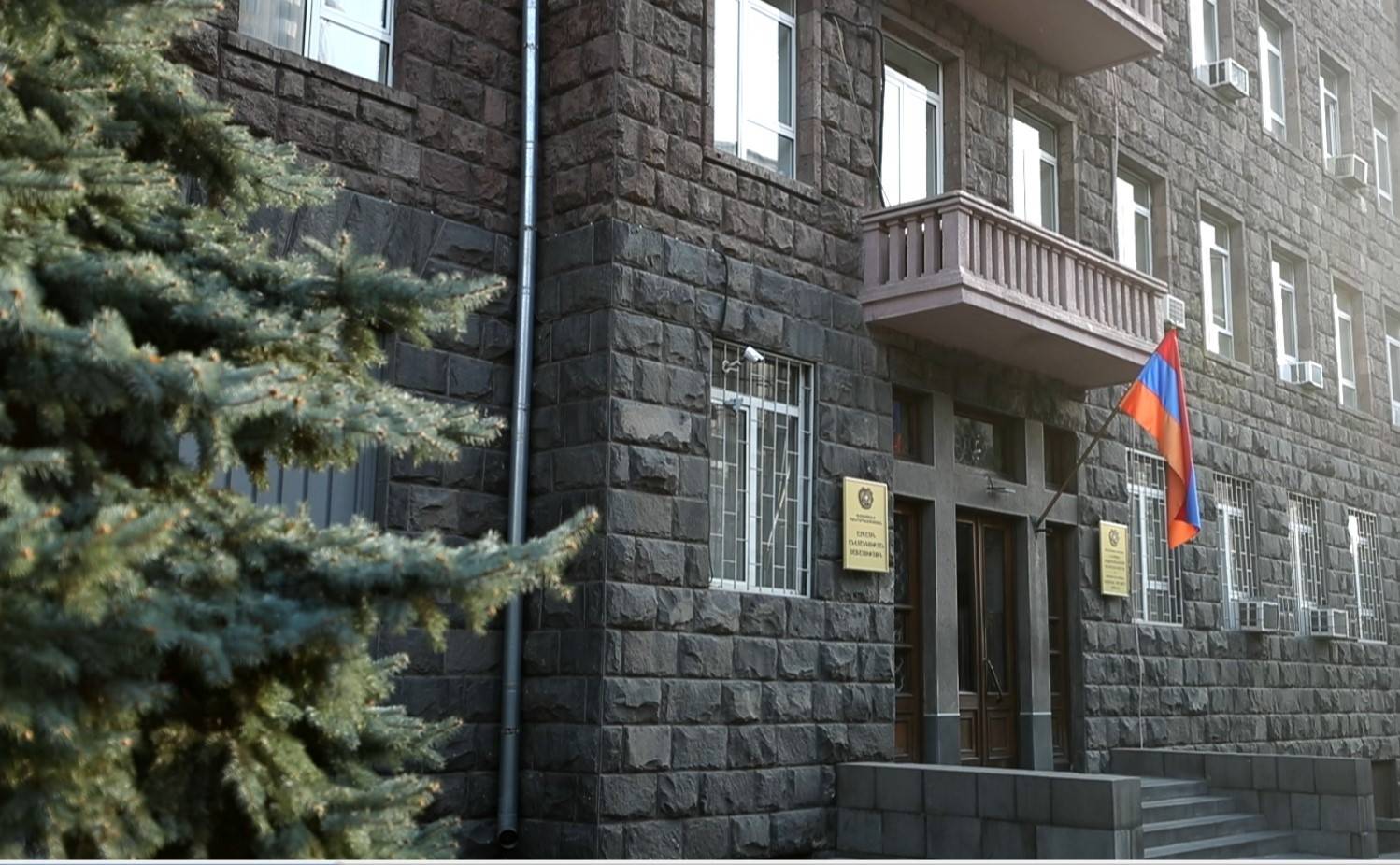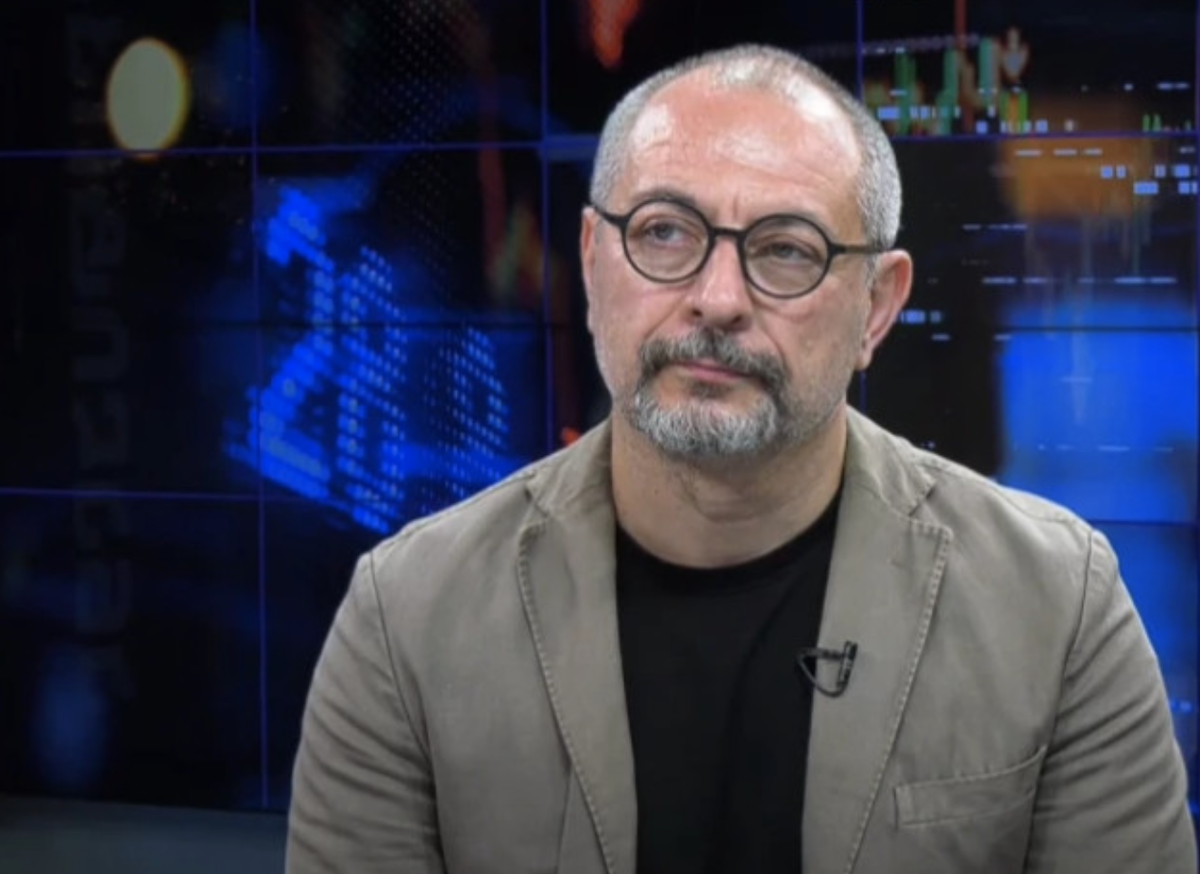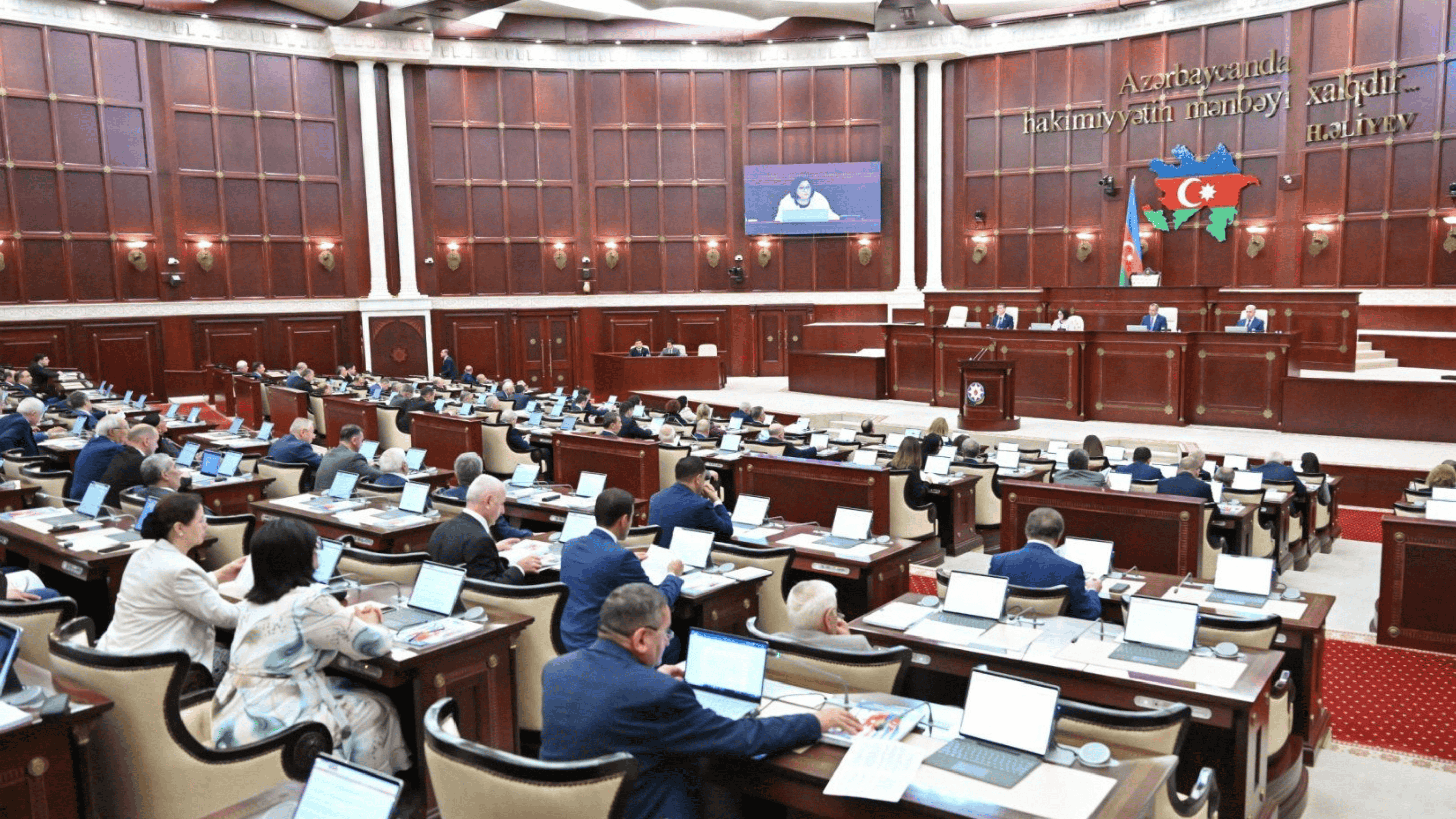Can Transnistria be reintegrated with Moldova? How it might work
Reintegration of Transnistria
Produced by Newsmaker with the support of RLNE
Many politicians and experts believe that there is a historical chance for the reintegration of Transnistria into Moldova in the near future.
The situation in Moldova is escalating due to an internal threat from pro-Russian forces attempting to influence the authorities — or even change them.
On the evening of February 28 in Chisinau, the government stopped a rally of the pro-Russian Shor party, with clashes between activists and the police. Airports are detaining all those arriving from post-Soviet countries, and the WizzAir has suspended flights to and from Chisinau altogether, citing tension within the country.
That Russia is planning a coup in Moldova was announced about a week ago by President Maia Sandu. “It will be organized under the guise of opposition protests and with the involvement of people with military training disguised as civilians. The plan also entails citizens of Russia, Belarus, Serbia and Montenegro coming to Moldova to attack government buildings, take hostages and try to change power in the republic,” the president said at an emergency briefing.
Many experts say that the unrecognized state of Transnistria will play a major role in the current situation. This territory broke away from Moldova in the early 1990s with the support of Russia. The decades-old status quo of a “frozen conflict” around Transnistria could change the invasion of Russian troops into Ukraine, which shares a border with the breakaway state.
But will Chisinau and its partners be able to offer a modern and realistic resolution plan? From a review of the Moldovan edition of NewsMaker.
- What was behind Lavrov’s visit to Baku? Expert comment
- South Ossetia to join Russia after all?
- Hundreds of Russian media clones still operating in Europe
The resolution plan has not changed since 2005, “but the lack of progress was beneficial to both parties”
Russia’s attack on Ukraine and its military failures, including the unsuccessful attempt by the Russian army to reach the border of Moldova in the Transnistrian sector, the colossal decline in the authority of the Russian Federation in the international arena, and the greatly increased role of Ukraine in a Transnistrian resolution — all this radically changes the balance of power in the negotiation process around Transnistria.
“The first opportunity to resolve the conflict appeared under the first president, Mircea Snegur, in the mid-1990s, a few years after the war on the Dniester,” former reintegration minister Vasyl Sova says.
“At the meetings of the leadership of Moldova with the leaders of Pridnestrovie [Transnistria], status options were discussed, and there was a healthy stir in Pridnestrovie about it. But there was no internal consolidation in the country, there was not enough attention from external partners, and the proposals could not be carried out,” Shova says.
The last time a political resolution of the Transnistrian problem was seriously discussed was twelve years ago, in 2010. The Russian Federation and Germany made proposals at that time, but they were not supported either in Chisinau or in Tiraspol. The matter never came to discussion of the details of a final resolution of the conflict.
In fact, for almost eighteen years no one in Chisinau has seriously thought about how to formulate a resolution model and what status to offer Transnistria as part of Moldova.
The current authorities proceed from the legislative developments of the 2005 law. The solution of the Transnistrian issue was not declared a priority by any Moldovan government, including the current one.
Instead of looking for solutions, for many years the focus has been on a program of confidence-building measures between the banks of the Dniester.
“Now, after so many years, it is clear that promoting the political process through confidence building measures is an unrealistic, Utopian position. But this was beneficial to many – both in Tiraspol and in Chisinau, and for some international players,” Minister Shova says.

“The defeat of Russia will change the situation in the regions of Moldova and Georgia occupied by thereby”
“Ukrainian tanks will not pass through Red Square simply because it is a nuclear country. And the defeat of Russia in this war will not be a capitulation, but a peace agreement. I believe this agreement will contain some provision on the occupied territories of Georgia and Moldova,” Sergey Sidorenko, editor-in-chief of the Ukrainian publication Evropeyskaya Pravda and author of the article “It’s time to liquidate Transnistria”, believes.
At the international level, a single package approach is increasingly being used in relation to all Russian-controlled territories — in Georgia, Ukraine and Moldova, he says. But Chisinau does not like this, since in Moldova, even at the official level, it is not customary to call Pridnestrovie an occupied territory.
“I agree that the package approach is not without flaws. But Moldova will not be able to continue the ostrich policy. Tectonic plates are moving, and even if Chisinau tries to maintain a frozen status, it will be decided without Chisinau,” Sidorenko believes.
For the most part, the inhabitants of both banks of the Dniester have become accustomed to the current state of affairs after thirty years.
There is no political request for a solution to the Transnistrian problem on any side of the conflict
For the average Moldovan, no Transnistrian conflict even exists. There is relatively free movement of people and goods; Pridnestrovian enterprises can legally engage in foreign economic activity.
There is a dialogue both entities, there are close economic and energy ties, none of the participants in the negotiation process seeks to escalate the conflict.
There have always been very few people in Chisinau who would support the idea of excessive pressure on Tiraspol or, moreover, a forceful scenario for resolving the Transnistrian conflict. And there has always been a consensus on a peaceful solution to the issue.
The vast majority of Moldovan citizens do not see any significant problem in the unresolved conflict.
According to the latest Barometer of Public Opinion, only 2.4% of citizens consider the Transnistrian conflict a priority issue that needs to be urgently resolved.
But at the same time, compromises or concessions in relations with Tiraspol are extremely unpopular measures among a significant part of the Moldovan politicians and voters for right-wing parties.
Therefore maintaining the status quo that has developed over decades has become the least costly strategy for the Moldovan authorities politically.
The prospect of joining the EU could change the status quo in the conflict
But with the war in Ukraine, the situation inside the country may change. In mid-2022, Moldova, along with Ukraine, received the status of EU candidate, and with it a clear European perspective and unprecedented support from the EU countries along this path.
President Sandu said that Moldova could become a member of the EU in this decade.
According to NewsMaker, Chisinau received a signal in Brussels that it would no longer be an obstacle to the EU accession process. Thus, they want to reduce the influence of Moscow, which strongly supports a freezing of the resolution.
The main beneficiary so far has been the Transnistrian administration, and now Tiraspol is trying to maintain existing channels and insists on negotiations between the Pridnestrovian leader and the President of Moldova.
“There is nothing positive in Chisinau’s attempt to take advantage of the Ukrainian situation. But of course, because of the war, they now have a lot more leverage,” Vladimir Yastrebchak, a former negotiator from Tiraspol, told NM.
He says that the Transnistrian resolution may become part of the agreement following the war in Ukraine. But then, he says, Chisinau should also be afraid of the consequences.
Russia increases pressure on Chisinau, including via gas supplies
In the summer and autumn of 2021, the Kremlin offered its parameters for a resolution to Chisinau.
“Moscow proposed to discuss issues related to Transnistria together with a new contract for gas supplies to Moldova [which is completely dependent on Russian gas],” Deputy Prime Minister Andrei Spinu said. When the Moldovan authorities flatly refused to discuss these two issues in relation to each other, Gazprom refused to renew the gas contract for Moldova.
At the end of December 2021, the Kremlin published a letter addressed to Maia Sandu with a proposal to immediately start direct negotiations on a resolution of the conflict and offering to clarify the status that Chisinau is ready to offer Tiraspol.
Chisinau did not respond to the letter.
The Conflict Resolution Commission met only three times in two years
In November 2021 the Moldovan Parliament created a special commission on issues of a Transnistrian resolution. As one of the members of the commission told NM, in his memory the commission met once. And then it was not a meeting, but a meeting with a foreign expert on Transnistrian resolution.
The head of this commission, Mihai Popsoi, said in conversation with NM that the commission had met three times, but admitted that it failed to contribute to the conflict resolution process.
The new political representative of Moldova in the negotiations, Oleg Serebrian, was appointed only at the end of January 2023. A month later, the invasion of Ukraine happened.
And the Transnistrian problem, which had previously been dormant for decades, finally came to the fore.
Moldova’s fear of Russia
In the first weeks of the war, when it was not clear where the Russian tank columns would stop, the Moldovan authorities did everything to prevent destabilization within the country and not to provoke Russia.
The government developed and actively promoted a “Moldova for Peace” campaign on social networks. The highest Moldovan officials did not miss the opportunity to recall the status of the republic’s constitutional neutrality. During his visit to Chisinau, US Secretary of State Anthony Blinken also promised to respect this status.
Tiraspol, in turn, also broadcast peace-loving and pacifist messages — but to Kyiv.
Now that the Russian army has broken its teeth on the Ukrainian defenses, the risk of a land corridor to the Transnistrian region, which the Kremlin obviously counted on, has significantly decreased.
But the prospect of the war spreading to Moldova has not disappeared.
Ideas for a forceful solution of the Transnistrian issue were discussed in Ukraine
“In the first months of the full-scale invasion of Russian troops in Ukraine, the idea of a forceful solution to the Transnistrian issue was seriously discussed. This decision was popular among the Ukrainian special services in April-May 2022. The politicians who promoted this were sure that Moldova would also be grateful for such an approach,” Sidorenko says.
In April-May the tension around the Transnistrian region reached its peak.
At the end of April 2022, three unidentified people shot grenade launchers at the main office of the Transnistrian MGB. A radio complex tower was also blown up in Tiraspol.
In Transnistria, Ukraine was accused of provocations. Chisinau insisted that the armed provocations were due to a struggle of intra-Pridnestrovian clans.
To date, according to Sidorenko, the efforts of civil society and experts have succeeded in explaining to politicians and representatives of Ukrainian intelligence that the use of force in resolving the Transnistrian problem is unacceptable.
“But the main reason why a forceful solution to the Transnistrian problem is impossible is the position of Chisinau and the public consensus in Moldova about an exclusively peaceful solution to the conflict,” Sidorenko maintains.
How exactly could the conflict be resolved? No real offers, several plans
Chisinau still has no formalized reintegration strategy or any other model of resolution, as before. Moreover, there is no single position among the authorities.
The Reintegration Bureau responded with the usual phrase about “the need to resolve the Transnistrian conflict on the basis of the sovereignty and territorial integrity of the Republic of Moldova.” But they also say that they are counting on “a more significant role for the EU in the negotiation process.”
What kind of role that would be, and how, the Bureau did not specify.
“Support fund” – Deputy Radu Marian
“The reintegration process will include a transitional period aimed at eliminating all artificial differences between the two banks of the Dniester. A special fund for the reintegration and development of the country in the post-conflict period will be created from national and international contributions.
But the process of reintegration will be connected with the withdrawal of Russian troops from the territory of Ukraine.”
“No autonomy, but guarantee of property” – MP Oazu Nantoi
“We don’t have to be bloodthirsty. The people in Transnistria need to be given a positive perspective of a united Moldova, with guarantees of property. We need the demilitarization of the region, and for this we need an international mechanism.”
“And some carrot and stick is needed, some divide and conquer.”
Nantoi does not consider it necessary to grant an autonomous status to Pridnestrovie as a single administrative-territorial unit and, in general, to negotiate with representatives of the Tiraspol administration.
“What kind of negotiations are there? With whom? We should come up with a plan of action and say: “Guys, if you agree, we can close our eyes,” says Nantoi.
In case of refusal, the Moldovan authorities, according to Nantoi, may start criminal prosecution or an international search for Pridnestrovian functionaries. There can also be economic pressure on the region, he said.
“Chisinau should give a positive perspective to people, but to those who are not sick in the head.”
The Parliament of Moldova adopted amendments to the Criminal Code which introduce the concepts of “anti-constitutional subject”, “illegal information structure”, “serious threat to the security of the Republic of Moldova” and criminal liability for calls for separatism.
According to the authorities, the quasi-institutions of power of the unrecognized state — the government and the Supreme Council — would also fall under the concept of “anti-constitutional element”.
“European integration as an incentive for Pridnestrovie. Ukraine and Russia should participate” – MP Mihai Popsoi
“European integration should be a big help in resolving the conflict, including from an economic point of view. Already Transnistrian producers have the opportunity to export goods to the EU and do not pay taxes,” Popsoi says.
In his opinion, significant progress in negotiations can be achieved only if Ukraine and the Russian Federation are part of the negotiation process.
“It’s hard for me to imagine a scenario when the Russian Federation will not be a participant in the negotiations – as long as there is a Russian contingent of troops and their peacekeeping mission, which has fulfilled its function and has outlived its usefulness,” says Popsoi.
Ukraine will decide everything for us?
Popsoi, like other representatives of the authorities, expects that the Transnistrian problem will be a topic at future peace talks after the end of the Russian-Ukrainian war.
“This is not only our hope, this is also the position of President Zelenskyy. Here I mean the openness and interest of Ukraine in resolving the conflict and the extent to which Ukraine [as a border country] understood the importance of this topic for itself,” the deputy says.
But there is a discrepancy in the policy of Chisinau.
Chisinau continues to buy electricity produced in Transnistria but is also adopting amendments to the criminal code which provide for punishment for financing separatism
According to Vasily Shova, “if Chisinau does not already create the prerequisites for a resolution, then in the post-conflict period everything will probably not be up to Moldova. In order for us to be taken seriously by external players, the initiative must come from the authorities.”
Russian military presence
It is difficult to imagine a solution to the problem of the Russian military contingent located in Transnistria, contrary to the constitution, before the end of the Russian-Ukrainian war, even if one or two minibuses would be enough to withdraw the Russian contingent from Transnistria, since most of the soldiers serving there are locals.
In the near future, a breakthrough solution could be a significant reduction in the peacekeeping mission and its transfer from permanent to temporary patrolling, as the first stage of transformation. The next step could be the withdrawal of the peacekeeping mission from Transnistria.

Which platform?
Even if significant progress is noted in the Transnistrian resolution, it is not entirely clear today in what format potential breakthrough agreements might be consolidated.
Moscow, Tiraspol, and Chisinau also insist on maintaining the 5+2 format as the main negotiating platform for Transnistria.
This format includes representatives of Moldova, Transnistria, the OSCE, the Russian Federation, Ukraine, the European Union and the United States.
Ukraine opposes the continuation of negotiations in this manner; at least for the duration of the armed conflict, Kyiv does not see an opportunity for itself to participate in a format where Russia and Ukraine have the same status as mediators.
At the end of December 2022, Vladimir Zelensky dismissed Ukraine’s special representative for the Transnistrian resolution and left this position vacant.
The status of Transnistria – what is proposed, what is possible?
International partners can help finally resolve the issue of the Russian illegal military presence on Moldovan territory, but the issue of the status of Transnistria and the post-conflict structure of Moldova is ultimately up to Chisinau.
At the international level, according to ex-Minister Shova, there is a preliminary consensus. These are statements that were adopted at meetings of the Council of Ministers of Foreign Affairs of the OSCE. These are, in particular:
- sovereignty, independence, internationally recognized borders of Moldova
- special status for Transnistria
- social, political, economic guarantees for the population of the region
- guarantees of post-conflict sustainable development for Moldova.
Based on these points, according to Shova, the parliament could accept an appeal to international organizations with a request to assist the negotiation process and a peaceful resolution:
“This is what needs to be done right now, while, unfortunately, this bloody conflict is going on next to us. And only we ourselves can take steps that will attract the attention of partners.”
“The majority of officials should receive legal guarantees as part of the resolution. People need to understand that they are protected. And any steps in the post-conflict period in terms of promoting separatist ideas should be strictly suppressed,” Shova says.
Who pays for reintegration?
The reintegration of the Transnistrian region into the economic and legal space of Moldova will require significant financial resources.
Now the economy of Transnistria is based on the supply of virtually free gas from Russia. Obviously, as soon as the region embarks on the path of reintegration, it will stop doing so. The cost of gas at current market prices is estimated to be $1.5 billion a year.
There is no health insurance system in Transnistria. The most important tax reforms have not been carried out; no VAT is levied. The salaries of state employees today are noticeably lower than in Moldova.
“Yes, financial injections will have to be significant. We know this from the example of East Germany. But still, Transnistria is not the GDR, but much smaller. Considering how open and generous our partners have been, I think that this situation will find understanding. I suppose that there will also be a great desire to help, if only there were political successes,” MP Mihai Popsoi says.
According to economists, the transition period for integration of the region, which will have to be financed, will last from five to ten years.
Popsoi sees a possible problem in the fact that some citizens of Moldova will not be happy when they have to subsidize Transnistria.
“It will be necessary to work with people, to show what they get from the association. Even without taking into account the economic potential of Transnistria, the resolution of the conflict may become a reason for the inflow of foreign investment. This is a plus that outweighs any costs,” Popsoi maintains.
In order to ensure that this subsidy does not come at the expense of the development of the whole of Moldova, a kind of “Marshall Plan” will be needed, which will both finance reintegration and provide investments for the development of the country as a whole.
Economist Veaceslav Ioniță says the amount needed is between 5 and 10% of Moldova’s GDP per year. “Moreover, two-thirds of this amount would go to the development of infrastructure in Transnistria. This money is needed for Moldova to reach the minimum level of development and quality of life for the EU countries,” Ionita says.


















